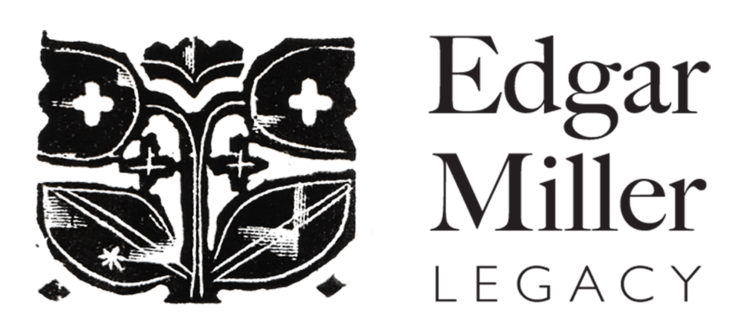Ospreys
Edgar Miller
1934
Tempera grasssa on panel, carved wood frame
L 99, W 114 cm
Ospreys depicts a sweeping vista overlooking the Yellowstone river, with a nesting, white-necked osprey in the foreground. Besides the quiet details of the bird and its home on a rock outcropping, the background is a deftly executed, expressionistic kaleidoscope of color and brushstrokes that give shape to mountains, canyons, and roaring rapids. The work is one of Miller's ultimate masterpieces in fine art painting. As versatile as the artist was in so many different mediums, Edgar Miller was a master painter with impeccable technical skills.
Over the course of his life, Miller painted dozens of landscapes and portraits on larger canvases. He often entered his works into formal exhibitions with jury panels. This painting was exhibited at the the Fourteenth International Exhibition of Water Colors at The Art Institute of Chicago from March 21 - June 2, 1935, at which Miller was one of three jurors of selection. Miller eventually agreed to sell the painting to his friend Dr. John Perl, in 1939, with whom he had traveled to Yellowstone in the early 1930s, and from which the inspiration for this landscape painting derived.
Miller is said to have painted this work, and many others like it, in the technique of tempera grassa. This production technique—purportedly used by Renaissance masters, like DaVinci—is derived by mixing traditional egg tempera paint with heavier oils. Though difficult to master, it is a great means for underpainting, layering, and creating a weightier appearance.
Ospreys - Edgar Miller - 1934 - Edgar Miller Legacy Archive
Sketch of Ospreys painting from memory - Edgar Miller - c. 1940 - Chicago History Museum
Miller produced fine brushstroke details, deftly mastering textures and shades of light. In 1939, he inscribed the transfer of the painting to his friend, Dr. John Perl, who traveled with him to Yellowstone in the early 1930s.
As with most of his paintings, Miller carved the frame prior to its exhibition at the Art Institute.


